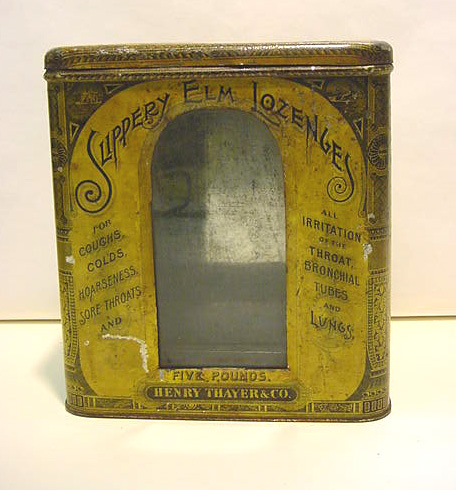 Courtesy of the Smithsonian Institution
Courtesy of the Smithsonian Institution
The "slippery elm" is a particular species of elm tree.
The inner
bark of slippery elm is slippery (imagine that!). The bark itself,
and its slip'em, have been used for centuries, by ingestion to treat
the common cold (cough and sore throat symptoms) and by external
application to relieve burns and rashes.
Slippery Elm was listed in the Pharmacopeia for professional reference until 1960 in Britain; not so late in the USA.
During the "deadball era" of American baseball, the 1900s and 1910s, slippery elm was commonly used to produce the right spit for a good "spitball" pitch. In 1920, the spitball pitch was banned for everyone but 17 "Grandfathers", registered major-league spitball pitchers, who were permitted to use the pitch indefinitely. "Outlaws" continued to throw the spitball pitch, probably less often than the legal spitballists did, usually without revealing any methods until retirement, if then.
Caswell's Slippery Elm lozenges. (no image)
tin, Slippery Elm Lozenges, 1885-1900
Henry Thayer & Co, Mfg. Cambridgeport MA, established 1847.
 Courtesy of the Smithsonian Institution
Courtesy of the Smithsonian Institution
bottle, Elm Bark Lozenges, late 19c
John Wyeth & Brother. Philadelphia PA, established 1860s.
Today part of American Home Products Corporation.
 Courtesy of the Smithsonian Institution
Courtesy of the Smithsonian Institution
Acknowledgments. Diane Wendt provided photos of the artefacts and information on the manufacturer-distributors, from the collection of the National Museum of American History, Smithsonian Institution.